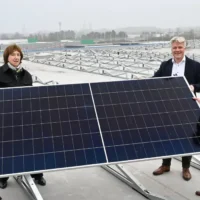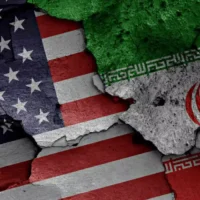Have always asked yourself why the Iran nuclear deal became a focal point of news only to fail? What went wrong? Was it an ego trip, political maneuvering, or just plainly a case of timing?
The Iran nuclear deal also known as the Joint Comprehensive Plan of Action (JCPOA) was agreed upon as a masterpiece in diplomacy. It promised to stop Iran from developing nuclear weapons in return for the removal of very damaging sanctions. Formerly signed in 2015, it was considered a symbol of promise—until it was not. The deal was failing by 2018 and fingers around the world were being pointed accusingly at everyone.
So let me tell you what happened, laugh a little, and try to determine why it did not work out.
The Promise of the Deal (And the Big Why)
However, in 2015 the JCPOA was marketed as the “nuclear peace treaty” of the decade. It was simple: Iran in turn committed to the reduction or uranium enrichment, and allowed the inspections of its facilities. In return, countries such as the U.S., EU, and China pledged to reduce sanctions made to the country.
For Iran, it meant economic recovery. For the West, it was about keeping nukes off the table. A win-win, right?
Well, not quite. Trust issues crept in faster than you can say “uranium centrifuge.”
JCPOA promises
Here’s a quick breakdown of what the JCPOA promised and what happened:
| Promise | Outcome |
| Reduce uranium stockpile by 98% | Achieved briefly, then Iran restarted enrichment by 2019 |
| Limit enrichment to 3.67% | Breached by 2021, enrichment hit 60% |
| Cut operational centrifuges | Initially met, then 2,000+ reactivated |
| Sanctions relief | U.S. withdrew, snapping sanctions back in place |
The stats show that while progress was made early on, the cracks became impossible to patch.
What Went Wrong?
There’s no single villain here. Let’s break down the major reasons:
Trust Issues: Iran felt cheated when sanctions relief didn’t meet its expectations. On the flip side, the U.S. doubted Iran’s long-term intentions.
Politics Got Ugly: In 2018, President Trump called the JCPOA “the worst deal ever” and withdrew the U.S., calling for tougher measures. Iran? They didn’t take it well.
Mixed Messages: Europe wanted the deal to survive, but without U.S. support, they were stuck playing referee.
Regional Pressure: Israel and Saudi Arabia lobbied hard against the deal, fearing Iran’s growing influence in the Middle East.
Iran’s Perspective: Why Should They Stick Around?
Iran played ball in the beginning—sort of. It reduced its uranium stockpile by 98%, shut down thousands of centrifuges, and allowed frequent inspections.
But then the sanctions relief? Meh. Iran’s economy didn’t bounce back as expected. Oil exports remained restricted, and global companies were too scared to invest due to U.S. threats.
So, Iran started asking, “Why should we keep our side of the bargain when the West isn’t delivering?”
The Role of Global Powers
Here’s the kicker: No one was on the same page.
The U.S.: First, it was all in. Then, Trump pulled the plug in 2018, claiming Iran wasn’t trustworthy.
Europe: Tried to save the deal but didn’t have the economic muscle to shield Iran from sanctions.
China & Russia: Quietly sided with Iran but didn’t openly defy U.S. policies.
Middle East Allies: Israel and Saudi Arabia called the deal “a dangerous gamble,” pressing for its collapse.
Did Sanctions Work or Backfire?
When the U.S. snapped back sanctions it significantly affected Iran.
Oil Exports: Decreased from 2.5 million barrels/day in 2015 to less than 500000 barrels/day by the year 2019.
Inflation: Soared especially with Iran’s inflation rate rising beyond 40% in 2021.
Currency Collapse: The Iranian rial, for circumstances, fell more than 70% in two years.
However, sanctions did not stall Iran’s nuclear program. However, Iran ramped up activities, enriching uranium above the JCPOA’s set milestones, much higher than that.
The Domino Effect: Regional Tensions
The deal’s collapse was not just bad for Iran; it rattled the entire Middle East.
Yemen: Proxy wars intensified as Iran ramped up support for the Houthis.
Iraq: Militia groups aligned with Iran became more active, straining U.S.-Iraq relations.
Israel: Military strikes against Iranian targets in Syria surged, further destabilizing the region.
The JCPOA’s failure wasn’t just about nukes. It exposed how fragile international diplomacy can be when power plays take over.
For Iran: They got some sanctions relief early but lost trust and economic stability.
For the West: They stopped a nuclear bomb for a while but lost influence in the region.
For Everyone Else: Rising tensions and higher oil prices. Yay.
Is Another Deal Possible?
If you’re hoping for a sequel, do not hold your breath. A new deal would require:
Trust Building: Both sides need to stick to their promises this time.
Regional Talks: Involve Middle Eastern allies like Saudi Arabia and Israel.
Economic Incentives: Iran needs tangible benefits, not just promises.
But as of now, both sides are playing the blame game instead of finding solutions.
Key Takeaways in Bullet Points
The JCPOA was designed to halt Iran’s nuclear ambitions while offering sanctions relief.
- It fell apart because of mistrust, politics, and unmet expectations.
- The U.S. exit in 2018 was a major blow, triggering Iran’s nuclear resurgence.
- Economic sanctions hurt Iran but didn’t stop its nuclear advancements.
- The collapse worsened tensions across the Middle East.
Conclusion
Why did the Iran nuclear deal fail? The JCPOA was an ambitious concept, but as American learnt without trust, diplomacy is to be done without sugar, it does not go well.
The JCPOA was a bold idea, but diplomacy without trust is like baking without sugar it just doesn’t work.



